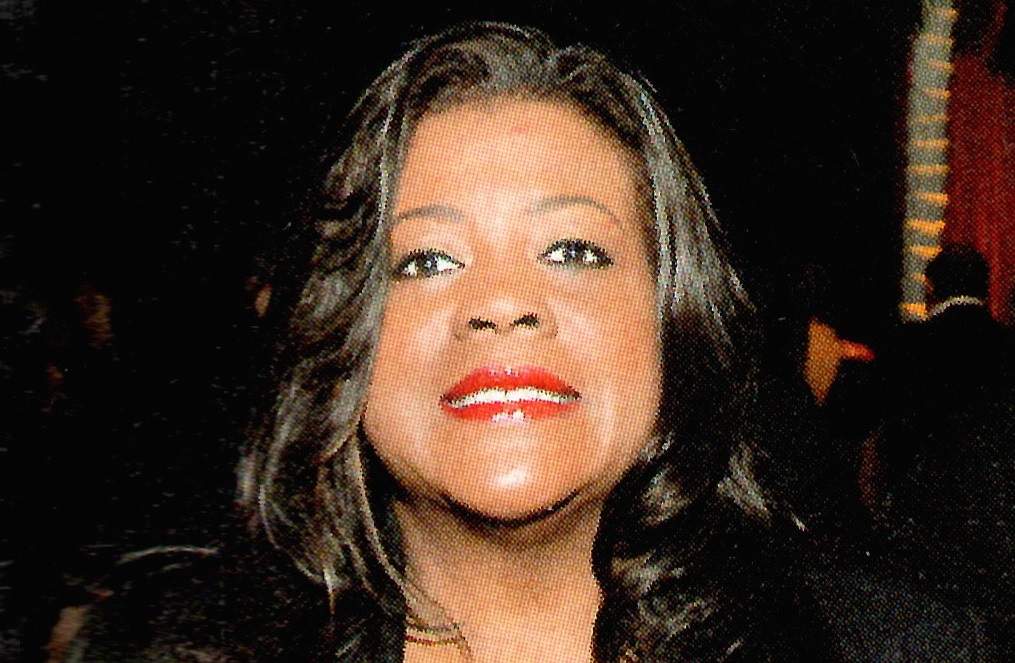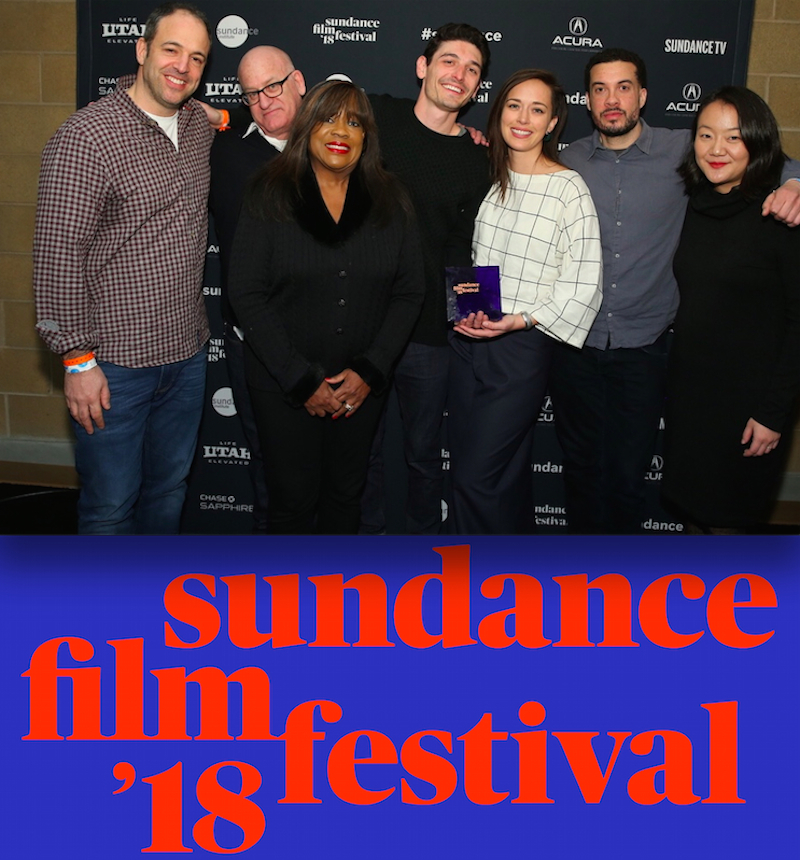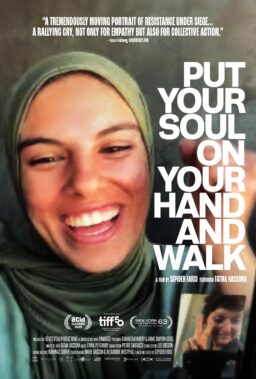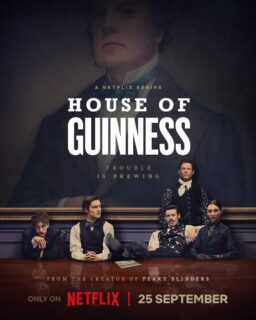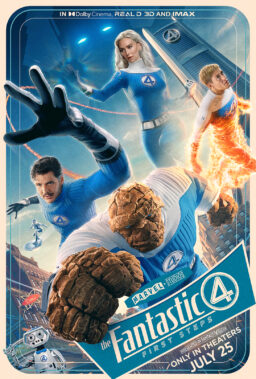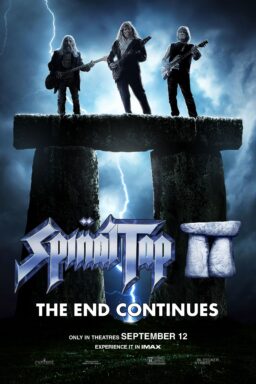Serving on the U.S. Documentary Jury at the 2018 Sundance Film Festival (January 18-28) was an enlightening experience. Sundance, the prestigious festival started by Robert Redford, is one of the few film festivals that gives as much weight and praise to its documentary fllms as to its narratives. There is a truth and an immediacy in documentaries. They provide a snapshot of what is happening in society and help us connect with the deepest parts that make us human. With all the talk in the media about certain Congressmen possibly colluding with the White House to plunge our government into a constitutional crisis, it was cleansing to get away and spend full days watching and discussing fascinating new films with my fellow jurors including Ezra Edelman, Oscar-winning director of “O.J.: Made in America“; Simon Chinn, producer of the Oscar-winning documentaries, “Searching For Sugarman” and “Man on Wire“; Barbara Chai, head of arts and culture coverage at Dow Jones Media Group; and Matt Holzman, host and producer of NPR’s The Document. And judging from the content and quality of the films at Sundance, I returned to my daily life actually encouraged despite the wranglings of all the President’s men.
Our jury was pretty harmonious for a rag-tag group of dedicated cinephiles and we took our duties seriously. Although we each had our own unique thoughts about the films, we were particularly buoyed by the breadth and depth of the myriad slices of life with which we were presented. If movies are our dreambeat, our filmmakers were dreaming of ways for students to make the world better through science, or ways to avoid tearing apart families through unfair minimum mandatory sentences, or of recreating a particularly heinous time in the history of a town to redress wrongs.
Some filmmakers dreamt of telling the story of Gloria Allred as a warrior for women’s rights, and others explored the creative but troubled brain of the famous woman artist Kusama, while yet others documented the manner in which society raises the value of art through expensive auctions. They dreamt of ending genocide; of reforming the way we raise money for political campaigns and of putting tighter controls on environmental regulations to protect our water, air and health. And then there was the film about the dream-maker director himself (Hal Ashby), who helped to craft many of our most enduring images on screen.
There were 16 films in all in competition in our section, and we eagerly sought out other films out-of-competition whenever we had a free moment. {Click here for the table of contents featuring the RogerEbert.com writers’ full coverage of the 2018 Sundance Film Festival, with dispatches written by Brian Tallerico, Nick Allen and Tomris Laffly, as well as our Ebert Fellows Jomo Fray, Gary Wilkerson Jr and Brandon Towns.}
Since the rules of the Competition require that most of our process and deliberations must remain confidential even though the festival is over, this article will primarily re-acquaint you with the documentaries we watched so that you can keep them on your radar when they are released. I can, of course, also remind you of the films that were awarded prizes.
Sundance has grown from the small American independent film festival it was 30 years ago, and now has about a dozen sections with some presenting films in competition, and other sections presenting films out of competition. The sections presenting films or series not in competition were the new Indie Episodics, the Midnight program, From The Collection, Kids and Special Events. In competition there were six Juries besides the US Documentary Jury:
US Dramatic Jury: (Jurors: Octavia Spencer, Jada Pinkett Smith, Rachel Morrison, Michael Stuhlbarg, Joe Swanberg)
World Cinema Dramatic Jury: (Jurors: Hanaa Issa; Ruben Östlund; Michael J. Werner)
World Cinema Documentary Jury: (Jurors: Joslyn Barnes; Billy Luther; Paulina Suárez)
Short Film Jury: (Jurors: Cherien Dabis; Shirley Manson; Chris Ware)
The NEXT Jury: (Juror: RuPaul)
Alfred P. Sloan Feature Film Jury: (Jurors: Dr. Robert Benezra; Dr. Heather Berlin; Kerry Bishé; Nancy Buirski)

Jan 18 Thurs:
We arrive at the Salt Lake City, Utah airport, and this time instead of taking a mass transportation shuttle to Park City (like in previous years), we are met by a courteous and friendly volunteer named Denny, who will shepherd the five of us around for the duration of the festival. Each group of jurors is assigned someone to look after them. Nice. And necessary, because as we ascend the mountain side, the altitude makes it a bit more difficult to breath, which makes it a bit more difficult to make decisions. We check into our hotel and prepare for our first joint activity. The initial confusion about when to go and where and how made it feel like a field trip in elementary school, but there is also a certain thrill about being an adult and not having every single answer mapped out in advance. It adds to the sense of adventure and eventually we figure out our marching orders and arrive at the Eccles Theater to see the opening night film, “Blindspotting.” Following the screening is a jolly Q&A with the filmmakers and crew, and because some of the actors are from musicals, like “Hamilton” (Daveed Diggs), the stage is quite lively.
After the movie, we are transported to the DeJoria Center where there are photographers, a red carpet, and an elegantly decorated ballroom. This is “The Artist At My Table,” the premiere fundraiser of the Sundance Institute. Each table is decked out with flowers and candles and beautiful table settings. The sponsors, donors and supporters are each seated with an artist or filmmaker or jury member as a host. The crowd at the table I am hosting find the entertainment mesmerizing–acrobatic musicians who double as performance artists while strumming instruments with strings that seem to stretch to the heavens. Artists and filmmakers also take to the stage to speak earnestly about why they are so passionate about the Sundance Institute. Their reasons go to the very heart of how art changes society. The evening is lovely, and a good time is had by all.

Jan 19 Fri:
Friday morning starts with a Jury Breakfast so that all of the jurors can meet the festival heads and each other. John Cooper, Trevor Groth, Keri Putnam, David Courier and others mingle informally with us while we partake of a very satisfying selection of breakfast dishes. Then we are very patiently told our duties and responsibilities as jurors. The rules of competition are also explained to us. (Not surprisingly, they will have to be explained again on other occasions.)
Even though we will be seeing movies primarily with our own group, these full gatherings create a sense of familial camaraderie. However, each group gets to make its own rules about whether to stay or leave during the question and answer periods following each movie. Some groups decide to leave so that they are influenced only by what is on the screen and not by whatever is said afterwards. Other topics like that are discussed and we are now ready to split up into our respective jury groups and start watching our assigned films.
The first film the US Doc Jury screened together in the documentary competition was Tim Wardle’s “Three Identical Strangers.” This film chronicles the amazing story of three men who realized in 1980 that they are identical triplets separated at birth. When they finally meet, they try to make up for some of the lost years before they knew each other. They become darlings of the news media and talk show circuit. But an investigative journalist discovers a more sinister side to their adoption story, there are people studying the triplets who know more than each adoptive parent was ever told. Let’s just say that in this case, the truth is stranger than fiction. We even find out why each triplett has sisters who are the exact age. I don’t want to divulge any more.
Stephen Maing’s explosive exposé, “Crime + Punishment,” details the efforts of police officers who covertly record and blow the whistle on superiors who enforce an illegal quota arrest system that had been outlawed in the New York Police Department by William Bratton. The film shows how these practices have resulted in the unfair arrests of primarily African-American and Latino citizens. It is a brave and dangerous undertaking and the policemen don’t know whether they will be believed and supported, or shunned for blowing the whistle. But they want to do the right thing. This situation is one to keep an eye on. I think some of the fallout from the investigations are ongoing.

Jan 20 Sat:
This is the day of the Million Woman March. Until today, the roads have been clear, and the weather has been unseasonably warm for January. In fact, there is little snow and the ski resort owners are not happy. But like last year, a snowstorm begins just before the March, and the crowds brave the snow and ice in an effort to show resistance to Trump and his stated policies. This year we also have the #MeToo and #TimesUp hashtags. There is indeed a shifting of consciousness and it is being played out in the streets, on the panels, in the social gatherings and of course, at the movies.
Before our screenings there is another chance to meet the jurors and filmmakers at the Directors Brunch. The Sundance Film Festival proper takes place in Park City, but the Directors Brunch is held out of town at the actual Sundance Institute, about an hour from Park City. Robert Redford welcomes the guests, gives us a bit of the history of the festival and the land, and then serves another delicious breakfast. Being a juror has its perks. But one rule we are very careful to observe is no talking to any of the filmmakers about their movies. We are not to give any indication of our feelings or thoughts about any of the movies. To be safe, we don’t even discuss films not in competition. We don’t want to accidentally drop hints or use words that others interpret as hidden messages. This is a delicate dance that we find ourselves engaging in over and over at the festival.
Rudy Valdez’s “The Sentence” is a heartbreaking film about a Latina mother who is sentenced to a mandatory 15 years in prison because she lived with a man who trafficked in drugs and guns. (This is referred to as “the Girlfriend problem.” How much culpability does the girlfriend have if she isn’t a drug dealer but doesn’t turn him in?) The tragedy of the situation is that she was sentenced 6 years after she had cleaned up her life, married a working man and given birth to 3 children. The film is shot by her brother, who starts off just making home movies, but then becomes an activist trying to get her sentence overturned. He has ten years of footage of her trying to raise her children remotely from prison by telephone and occasional visits.
Robert Greene’s “Bisbee ’17” restaged the deportation of immigrant miners that occurred a century ago on the Arizona-Mexico border. The whole town participates in the recreation in an attempt to understand what happened, and hopefully, prevent it from ever happening again. The young people in town had never heard of the incident, but once they commit to participating in the staging, they become leaders and advocates for the rights of immigrants in a way they had not known was necessary.

Jan 21 Sun:
Sunday morning starts with the Foundation Brunch where I am asked to speak on behalf of the Roger and Chaz Ebert Foundation to tell why I participate in the programs of the Institute like sponsoring Ebert Fellows at the festival, and giving grants to documentaries in the Catalyst Forum. The answer is because I find that in most instances, the goals of Sundance are compatible with mine. To support independent filmmakers and to help produce a more diverse array of artists and writers whose art encourages more empathy, kindness, compassion and forgiveness in the world. The other speakers told similar stories of the satisfaction of working with a partner like the Sundance Institute.
Nathaniel Kahn’s “The Price of Everything” takes us inside the rarefied world of art auctions where a painting can be sold for upwards of a hundred million dollars! But it is also at times a playful stroll through the contemporary art world, peopled with eccentric curators and artists and art collectors. Here we are engaged in the the argument of whether an expensive price makes for better art, or whether the value of art is intrinsic irrespective of it’s monetary value. This documentary is entertaining and eye opening.
Laura Nix’s “Inventing Tomorrow” focused on young innovators from three different countries at the Intel International Science and Engineering Fair (ISEF). Other students come from different parts of the world to compete at the science fair. One of the most impressive parts of their quests is that the scientific projects on display are born out of their own sincere desire to solve real life problems in their villages. But since these students are teenagers, they are also going out in the world at a time when their hormones are also speaking to them for the first time, and they are as excited to meet people from other cultures as they are about their science projects. It is refreshing to watch these future leaders grow and learn under the watchful eye of their science tutors.
Two other films I enjoyed at the festival were Boots Riley’s wildly inventive, “Sorry to Bother You,” with star-making performances by Lakeith Stanfield and Tessa Thompson. And Betsy West and Julie Cohen’s “RBG,” a wonderful documentary about octogenarian Supreme Court Justice Ruth Bader Ginsburg. Justice Ginsburg was in the audience, and because this film was not in competition, I can confess that as she took the stage after the screening, I was so overcome with emotion that I cried. For me, she is a rock star. A true American heroine who loves this country and our liberties. Some people were fearful for her to come to Sundance during the middle of a flu epidemic because they want her to stay as healthy as possible for as long as possible. The Notorious R-B-G.
Jan 22 Mon:
Alexandria Bombach’s “On Her Shoulders,” is a powerful profile of Nadia Murad, a 23-year-old Yazidi woman who survived the atrocities committed against her people by ISIS. She was raped and brutalized and yet she didn’t give up. To watch her evolution is poignant. By the time she is speaking before the United Nations councils, you realize the real weight of a people she is carrying on her shoulders. Every aspect of her life is informed by this. And she is looked upon as a model by displaced Yazidis everywhere.
Kimberly Reed’s “Dark Money” offers a timely look at how the state of Montana has fought back against corruption following the landmark Supreme Court case, Citizens United v. Federal Election Commission, dealing with the regulation of campaign finance by organizations. In the history of Montana, the rich mine owners once bought the favors of politicians that allowed them to pollute the waters. As a result there are areas where birds die as soon as they land on polluted rivers. Montanans put state laws into place years ago that prohibited unlimited amounts of secret money donated by corporations or out of state donors without disclosure. So when the Supreme Court affirmed the ruling in Citizen’s United opening up the floodgates of secretive political PACS, Montanans fought back. One investigative journalist and State official in particular were persistent in fighting against these interests and their tactics pave the way for other states to join in the fight.
Michael Dweck’s “The Last Race” visits a blue-collar American racetrack that has been owned by a husband-wife team for years, but whose very existence is being threatened by urban development and the illness of the owners. Can a low profit stock car racetrack continue in the face of these challenges? And who are the people who call this circle their home and family? We are shown a world that not many know very intimately. (In my life a long time ago I briefly raced cars and knew how to look under the hood and repair them.)

Jan 23 Tues:
How exciting to begin the day learning that Steve James finally got an Oscar nomination for Best Documentary (“Abacus: Small Enough to Jail“). He happened to be at Sundance with his new episodic series “America To Me.” In addition to this well-deserved recognition, we were also able to celebrate the nominations earned by four of our fellow jurors: Rachel Morrison, who became the first woman ever nominated for Best Cinematography for her her work in “Mudbound“; Octavia Spencer, for her supporting performance in “The Shape of Water“; director Ruben Östlund, who received a Best Foreign Language Film nomination for his Palme d’Or-winning picture, “The Square,” one of my favorite movies at last year’s Cannes Film Festival; and Joslyn Barnes who produced Yance Ford’s powerful documentary “Strong Island.”
This is also the day that we have mid-week preliminary deliberations so that we could talk through the process of what we had seen so far, and discuss how to gauge the rest.
And now, onto today’s programming!
Amy Scott’s “Hal” provided an affectionate look at the great filmmaker Hal Ashby, director of such classics as “Harold and Maude,” “Being There,” “Shampoo,” “Coming Home,” “Bound for Glory” and “The Last Detail.” What drove Hal to make hit after hit, especially in the 70’s? Was it his genuine disdain for authority and his rebellious streak? Or did he have an obsessive-compulsive personality that didn’t allow him to tone down his creativity? How did this affect his relationship with his wives and girlfriends? With his children? And what affect did it have on other filmmakers like Norman Jewison and Haskell Wexler? This is a fascinating documentary that has to be seen by anyone who loves movies.
Heather Lenz’s “Kusama: Infinity” gave us an inspiring glimpse at the legacy of trailblazing female artist Yayoi Kusama, the most famous living female artist in the world. Here again is an artist whose compulsions compelled her to create beyond the ability of regular artists. But was her vision a result of purely a creative mind or of a mentally disturbed one? And why did male artists get away with sampling from her work and receiving credit for it before she did? Here again, this is a documentary that is of interest to anyone who likes or collects art.
Not in competition was Cody Lucich and Gingger Shankar’s moving film, “Akicita: The Battle of Standing Rock.” This is one of the few films told from the point of view of Native American filmmakers that came out of the protests against the Dakota Access Pipeline by the Native American water protectors at Standing Rock. By the time they left, Cody had been filming for about eight months and got footage that no one else was privy to. The film is a work in process but the festival provided a chance for an early look at its premiere. In full disclosure, the Ebert Foundation gave a grant to this film through the Catalyst Forum.

Jan 24 Wed:
Derek Doneen’s “Kailash” is an astonishing film about the global movement started by Kailash Satyarthi to rescue children from slavery in factories. Utilizing hidden cameras, the picture is constructed like a thriller, while providing us with a moving portrait of the Nobel Prize-winning activist. It’s exhilarating to watch a film that charts the efforts of one person to save the life of another, and that is precisely what Kailash does in this movie, as he strives to track down a young boy and return him to his father, and save hundreds more in the process. He firmly believes that children deserve play, food and school.
RaMell Ross’ “Hale County This Morning, This Evening” is an impressionistic portrait of the South, and almost plays like a silent film. It allows you to feel and experience the rhythm of the lives of the people it’s chronicling. The filmmaker observes with his camera rather than use words to tell you what to think of the citizens from this small town. This poetic rendering of working class African-Americans is one that you often don’t find in movies, except perhaps in Charles Burnett’s work. In fact, I thought a lot about Burnett and Yasujirō Ozu while watching this film as it continuously experimented with the form.
Bing Liu’s Kartemquin film, “Minding the Gap,” etched a memorable vignette of three young men coming of age in Rockford, Illinois. Taking us into the heart of the town’s skateboarding culture, this film explored the camaraderie between these men. Though they may initially seem aimless in their goals for the future, these friends truly come alive on their skateboards. Liu’s film has an authenticity as well as a nonjudgmental perspective, since the director is a part of the culture that he’s depicting.

Jan 25 Thurs:
Stephanie Soechtig and Jeremy Seifert’s “The Devil We Know” follows citizens in West Virginia taking on a corporation that has been poisoning their drinking supply. This is a chilling documentary because it builds up like a drama, and tracks a substance that we think of as harmless (teflon) and finds that the process of making and disposing of it leaves a trace in the blood of over 90% of the US population. And it is not without its side effects. However, how do you balance the economic gains promised by one of the town’s biggest employers with the risk to the health of one’s unborn.
Last but not least was Roberta Grossman and Sophie Sartain’s “Seeing Allred,” a film about the efforts made by women’s rights attorney Gloria Allred to bring Bill Cosby and Donald Trump to justice. We find out things about Allred’s background that I had never heard before. What makes her tick? Are her tactics just attention-grabbers? As a lawyer, I was familiar with her when she was an early defender of the rights of women. How has her practice changed over the years? This is an absorbing look at someone who before the present #MeToo movement, seemed to be tilting at windmills.
I will mention that there are enough parties here at Sundance to attend every single night of the festival. However, what happens in the Juries stays in the Juries. Enough said.

Jan 26 Fri:
This is the day set aside for Jury Deliberations so we are given freedom. What do we do with our free time–go to see more movies out-of-competition of course! Later we are taken to an undisclosed location where we can once again socialize with the other jurors before we are whisked away to separate rooms to begin our final discussions to pick the prize winners. I can’t say too much about our process except that each film is given due consideration, and we go around and around until we reach a consensus. By the time we tell the festival heads that we have reached a decision, each of the five members of our Jury agree that we have chosen films that we are proud to present as our choices.
Jan 27 Sat: Awards Night
Awards are given in the evening so for the first time some of us get to hit the slopes.
The awards ceremony has come a long way from the small, intimate ones I remember. This one takes place at the Basin Rec Fieldhouse, which is set up like a big Jamaican Dancehall with colorful decorations, big screens and stations of good food everywhere. After the awards presentation there will indeed be dancing to the tunes spun by DJ-for-the night RuPaul! This is live!
We award the winners: The first and second prize categories are prescribed by the rules. The first prize is the Grand Jury Prize, and the second prize is the Director’s Prize. Then we give four Special Jury Prizes. “Kailash” received our Grand Jury Prize while “On Her Shoulders” earned our Documentary Award for Best Director. “Hale County This Morning, This Evening” took home a Special Jury Award for Creative Vision. We presented “Crime + Punishment” with a Special Jury Award for Social Impact and “Three Identical Strangers” with a Special Jury Award for Storytelling. And “Minding the Gap” received a Special Jury Award for Breakthrough Filmmaking.
While not part of the awards given out by the jury, “The Sentence” was crowned with the Audience Award, which is a high honor. {Click here to read the full list of winners across all categories.}
Jan 28 Sun:
Most of us are packed and ready to head to the airport. But for those who have flights to far away lands, one more movie may be in the offing before saying farewell to Sundance. See you next year.
Header photo caption: U.S. Documentary Jury members with Grand Prize-winning director Derek Doneen and Best Director winner Alexandria Bombach.
